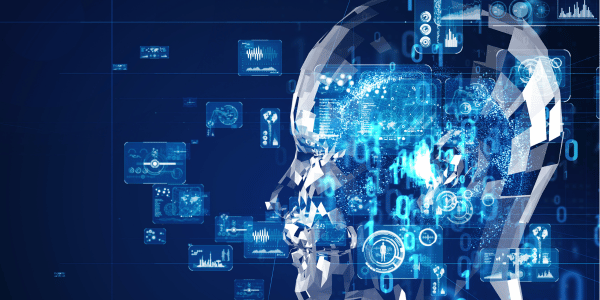Address
304 North Cardinal St.
Dorchester Center, MA 02124
Work Hours
Monday to Friday: 7AM - 7PM
Weekend: 10AM - 5PM
Address
304 North Cardinal St.
Dorchester Center, MA 02124
Work Hours
Monday to Friday: 7AM - 7PM
Weekend: 10AM - 5PM

It might initially feel like entering an intricate maze meant for a select few. The task of learning how to develop AI software is daunting, reserved for those with deep technical expertise. However, with new tools and experts, it’s far from exclusive and impenetrable. Armed with the right guidance and tech, anyone can navigate this path. Honestly, you can turn the complex into something accessible and empowering.
This guide simplifies the process of how to develop AI software, ensuring it’s not just for the tech elite but for anyone with curiosity and the drive to explore. We aim to break down the barriers, offering step-by-step directions that transform AI software development from a daunting challenge into an exciting opportunity. By the end of this exploration, AI technology won’t just be approachable; it’ll be a powerful companion for your projects and ideas, ready to bring them to life in ways you might not have imagined. Let’s start this journey together, making AI accessible and turning the intricate into the intuitive.
Developing AI software starts by getting familiar with its foundational elements. Essentially, it’s the combination of data—lots of it—with algorithms. These algorithms are sets of rules or instructions that guide the AI in processing that data. The ultimate goal? To create models that can think and make decisions somewhat like humans.
A super simple intro to AI:
Artificial Intelligence is like a super-smart digital assistant that learns from experience. At its core, it uses machine learning (ML) to improve from data.
In essence, you are teaching a computer to recognize patterns by showing it examples. Deep learning, a subset of AI, allows the computer to analyze data with brain-like structures called neural networks, making it even smarter. Essentially, it is a continually evolving technology that learns, adapts, and gets better over time, changing how we interact with the world around us.
This combination allows AI to handle a wide range of tasks, from simple to highly complex. Whether it’s answering a customer’s question, recognizing a face in a photo, or predicting the next big trend, AI is all about solving problems and making informed decisions.
Alright, let’s roll up our sleeves and dive into how you can transform your smart software from a daydream into a digital reality. It’s like plotting a road trip on a map: knowing where you’re starting from and where you want to end up makes all the difference.
At the heart of every solution lies a clear-cut challenge. Identifying what you wish to solve is the cornerstone of your development process.
Be crystal clear. Pinpoint exactly what you want your software to achieve. Start by asking key questions:
Remember, clarity is your friend. The better you understand the problem, the more tailored and impactful your solution will be. Setting a clear goal guides the entire development process, ensuring every decision aligns with your desired outcome.
Data isn’t just king in the universe of how to develop AI software; it’s the entire kingdom. This step is where you start to build the foundation of your project with bricks made of data. But not just any data – you’re after the good stuff. Quality, diversity, and relevance are the golden trio when it comes to data collection.
Speaking of AI and big data, it becomes clear that the synergy between vast amounts of information and sophisticated algorithms is what truly fuels innovation. The dance is intricate, with each step calculated and each movement fine-tuned to the rhythm of your project’s goals.
Here’s how to ensure your data collection sets you up for success:
Like a well-balanced diet, your software thrives on a variety of data. Look beyond the usual suspects. Explore different types, sources, and formats. This could mean blending historical data with real-time inputs or mixing qualitative insights with quantitative facts.
While big data offers vast volumes, focus on the richness and accuracy of the data you gather. High-quality data reduces noise and enhances the precision of your outcomes.
Every piece of data should serve a purpose. Ask yourself how each dataset moves you closer to solving your identified problem. Irrelevant data can lead you off course, so stay focused on data that aligns with your objectives.
In your quest for data, it’s crucial to navigate the ethical considerations of data collection. Respect privacy, obtain necessary permissions, and be transparent about your data use.
Gathering data is just the start. Preparing it for analysis — through cleaning, organizing, and sometimes enriching — is essential. This step ensures your algorithms can work their magic effectively.
The world and its data are always evolving. Implement strategies for ongoing data collection to keep your software informed and adaptive.

Selecting suitable tools and technologies is crucial in how to develop AI software. Your selections in programming languages, frameworks, and platforms will dictate your end product’s development journey and functionality.
Selecting the right technologies entails a deep understanding of your project’s unique requirements and the strengths of each tool. Moreover, factors like scalability, community support, and ease of use should guide your choices. With the right set of tools, you’ll streamline development and enhance your solution’s performance and adaptability. Ultimately, bringing your vision to fruition more efficiently.

With your dataset ready and the right tools chosen, it’s time to dive into building and refining your model. This step involves selecting the appropriate algorithm that matches your project’s goals and using your data to train the model. This is an iterative process where adjustments and refinements are made to enhance accuracy and performance.
At the heart of developing intelligent software are two key elements: data and algorithms.
Understanding the types of machine learning is crucial for choosing how your model learns from the data, affecting the structure of your dataset and learning parameters.

Consequently, by merging quality data with the right algorithms, you’re effectively setting the stage for your software to tackle designated tasks.
Importantly, the development process unfolds as a cycle of testing, adjusting, and improving. Initially, you start by tasking your software with a function, relying on algorithms to guide its learning. As the process continues, the software becomes increasingly sophisticated, especially as it’s fed more data and algorithms are fine-tuned.
Ultimately, entering the world of software development isn’t about knowing everything upfront but about being open to experimentation and growth. Armed with a solid understanding of data and algorithms, you’re well-prepared to tackle complex challenges, making software development an exciting and accessible venture.
Testing and refining your software is a key step in making sure it’s ready for the real world. It’s not just about making sure your software works; it’s about ensuring it works well under all sorts of different conditions. This phase is like a stress test for your creation, pushing it to its limits to find any weak spots or areas that could be better.
In the end, the aim is to create software that’s not just okay, but great. By putting in the effort to test and refine your software, you’re making sure it stands out for all the right reasons. This dedication to excellence means your software won’t just meet expectations—it’ll exceed them, offering users a truly valuable tool.
Releasing your software marks a significant milestone. However, it truly is a beginning as well. From this point forward, observing how your software performs in real-life scenarios becomes crucial. Gathering user feedback and continuously refining the system is an iterative process that ensures your software not only meets but adapts to evolving needs and expectations.
Initially, upon deployment, closely monitor your system’s behavior in the live environment. Look for any unexpected challenges or areas where the software might falter. Implementing analytics tools or feedback mechanisms can aid in this process, providing you with real-time insights.
You’ll also want to get feedback from end users. Tools like surveys, feedback forms, or even direct interviews can offer nuanced perspectives on your software’s usability and effectiveness. Additionally, setting up a system for users to report bugs or suggest improvements directly can turn your user base into a rich resource for enhancement ideas.
Furthermore, learning is an ongoing commitment. Incorporating agile methodologies into your development process allows for swift responses to feedback and the structured implementation of improvements. Examples include using sprint cycles for regular updates or A/B testing to compare different solutions to the same problem.
Please don’t forget to take a moment and celebrate—this is huge! Navigating through this complex journey and hitting those milestones makes it all worthwhile. You’ll see that getting to grips with how to develop AI software turns into a truly rewarding adventure, one that keeps on giving with every new discovery and tweak you make.
Below is a table that breaks down the process into six manageable steps. From identifying the problem to launching your software and learning from real-world feedback, this table offers a concise overview of each phase and key actions to take.
Use this as your compass to navigate the complexities of software development, ensuring a smooth journey from idea to deployment.
| # | Step | Phase | Key Actions | Tools & Tech |
|---|---|---|---|---|
| 1 | 🎯Pinpoint the Problem | Planning | Identify what you wish to solve; Ask key questions to clarify your goals. | N/A |
| 2 | 📊Collect Data | Data Preparation | Build the project foundation with quality, diverse, relevant data. | AI and big data synergy; Diversify sources; Ensure relevance. |
| 3 | 🛠️Choose Tools & Tech | Technology Selection | Select programming languages, frameworks, and platforms that fit your project’s needs. | Python, R; OpenAI, Google Cloud; GitHub, Jupyter Notebooks. |
| 4 | 🤖 Develop & Train Models | Model Building | Choose the right algorithm; Use data to train and refine your model. | Deep Learning Algorithms; Types of Machine Learning. |
| 5 | 🔄Test and Refine | Quality Assurance | Evaluate software performance; Make improvements based on feedback. | Simulate real conditions; Use analytics tools; Aim for continuous improvement. |
| 6 | 🚀Launch and Learn | Deployment & Evolution | Deploy software; Monitor and adapt based on real-world use and feedback. | Agile methodologies; Feedback mechanisms; Celebrate milestones. |
Each step is an integral part of a journey that’s both challenging and rewarding, leading to the creation of solutions that can make a real difference. Good luck!